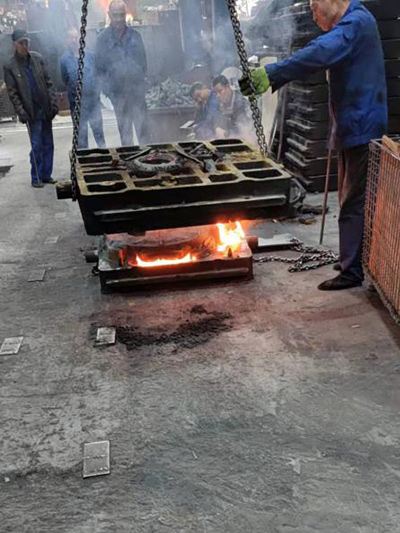The Importance of Foundry Sand A Comprehensive Overview
Foundry sand, an essential material in metal casting processes, plays a significant role in the production of industrial components and intricate parts. This special sand is primarily used to create molds and cores that shape molten metal into desired forms. The production, quality, and recycling of foundry sand have become crucial elements in ensuring efficiency and sustainability in the foundry industry.
What is Foundry Sand?
Foundry sand is typically composed of high-quality silica sand, which is characterized by its round grains and high durability. It is often sourced from dunes, river beds, or quarries and contains a minimal amount of clay and other impurities. The properties of foundry sand—such as its ability to withstand high temperatures and excellent flowability—make it an ideal choice for creating molds. The most common type of foundry sand used is silica sand, although other materials, including zircon, chromite, and olivine, may also be employed depending on the casting requirements.
The Role of Foundry Sand in Metal Casting
The primary function of foundry sand in metal casting is to create molds that can withstand the heat of molten metal and maintain their shape during the casting process. Foundry sands can be classified into two main categories green sand and chemically bonded sand.
- *Green Sand* This traditional mixture of silica sand, clay, and water is known for its flexibility and reuse. Green sand molds are prepared by compacting the sand around a pattern to create a cavity for the molten metal.
- *Chemically Bonded Sand* These sands are often used for more complex shapes and finer details. This type of sand is typically mixed with a binding agent that hardens upon exposure to a catalyst or heat, setting the mold materials firmly in place.
The quality of the foundry sand directly impacts the casting process and the final properties of the cast product. The right selection of sand type not only affects the mold's ability to withstand thermal shock but also influences surface finish and dimensional accuracy.
making foundry sand

Recycling of Foundry Sand
One of the significant concerns in the foundry industry is the efficient recycling of spent foundry sand. After each casting cycle, a large quantity of sand can be discarded or considered waste. However, many foundries are increasingly adopting recycling practices to minimize environmental impact and reduce costs associated with new sand procurement.
Recycled foundry sand can be processed and treated to remove impurities and restore its properties for reuse. In many cases, recycled sand can replace a substantial portion of the new sand required for subsequent molds, leading to economic savings and a decrease in landfill waste. This sustainable practice promotes a circular economy in the foundry sector and reduces the industry's carbon footprint.
Challenges and Future Directions
Despite its advantages, the foundry industry faces several challenges related to foundry sand. The continuous demand for higher quality standards and innovative casting techniques necessitates ongoing research and development. Moreover, the regulatory landscape concerning environmental standards for sand mining and disposal is tightening, pushing foundries to adopt greener practices.
Future trends suggest an increasing interest in alternative molding materials, such as synthetic sands and more eco-friendly binders, which could enhance the sustainability of foundry coating processes. Additionally, advancements in technology, such as 3D printing, are beginning to alter traditional sand casting methods, allowing for more efficient and accurate production.
Conclusion
In summary, foundry sand is a fundamental component of the metal casting industry, crucial for producing high-quality products with intricate shapes. As sustainability becomes a pressing concern, the recycling and reusability of foundry sand have garnered attention, leading to innovative practices that benefit both the environment and the economy. Looking ahead, the foundry industry must continue to adapt and evolve, embracing new technologies and materials to meet the demands of a changing world. The importance of foundry sand will undoubtedly remain a pivotal topic in the discourse surrounding manufacturing and industrial production.
Post time:ное. . 25, 2024 05:43
Next:parts of sand casting
